
Home makeover series part one take us to Biophilic design in budget. Incorporating an interior design makeover in your budget can have many benefits, even if you don’t have a lot of money to spend. By making small changes like adding new throw pillows or rearranging furniture, you can refresh your space and give it a new look and feel. In this Home Makeover series we will incorporate different interior design themes and styles in budget with product links.
Here are some tips for incorporating interior design into your budget:
-
Plan ahead: Before you start shopping or making changes, take some time to plan out your vision for your space. Think about the colors, patterns, and overall aesthetic you want to achieve. This will help you stay focused and avoid impulse purchases that might not fit with your overall plan.
-
Prioritize: Make a list of the changes you want to make in order of priority. This will help you stay on track and make sure you’re spending your money where it will have the biggest impact.
-
Shop smart: Look for deals and discounts at secondhand stores, online marketplaces, and even garage sales. You can also try DIY projects like painting furniture or creating your own artwork to add a personal touch to your space.
-
Repurpose what you have: Before you buy new items, see if there are ways you can repurpose or reuse items you already have. For example, you can recover an old chair or use a vintage scarf as a table runner.
-
Focus on high-impact items: Rather than trying to make a lot of small changes, focus on a few high-impact items that will have the biggest impact on your space. This might include a new area rug, a statement piece of artwork, or a new light fixture.
Overall, incorporating interior design into your budget is all about being creative and resourceful. With a little planning and some smart shopping, you can create a beautiful and functional space without breaking the bank.
What Is Biophilic Design?
For Part one we have Biophilic design theme.
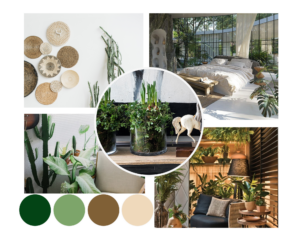
Biophilic design is an approach to interior design that seeks to connect people with nature by incorporating natural elements like plants, water, and natural light into living spaces. The goal is to create environments that enhance well-being, reduce stress, and promote a sense of calm and relaxation.
Biophilic design is an architectural and interior design approach that incorporates elements of nature into the built environment in order to create a connection between humans and nature. It is based on the idea that humans have an innate need to connect with nature and that this connection can have a positive impact on our health and well-being.
Biophilic design principles include incorporating natural elements such as plants, water, and natural materials like wood and stone, as well as maximizing natural light and views of nature. It can also include elements that mimic natural patterns and forms, such as fractals and curves.
Biophilic design has gained popularity in recent years because of the growing recognition of the importance of nature for human well-being. Studies have shown that exposure to nature, even in small amounts, can reduce stress, improve cognitive function, and promote physical health.
Here are some ways you can incorporate biophilic design into your home:
Bring in plants:
Plants are an easy and effective way to add a natural element to your home. Choose plants that are easy to care for and that will thrive in the light and humidity conditions of your space. Some popular indoor plants include spider plants, snake plants, and pothos.
Use natural materials:
Incorporate natural materials like wood, stone, and bamboo into your home decor. You could choose a wooden coffee table, a stone accent wall, or bamboo blinds.
Add water features:
Water features like fountains or aquariums can bring the soothing sound of running water into your home. They also provide a visual element that can be both calming and mesmerizing.
Maximize natural light:
Open up your windows to let in natural light, or consider adding skylights or sun tunnels to bring in even more light. Natural light can help regulate your circadian rhythms and improve your mood.
Use earthy colors:
Choose earthy colors like greens, browns, and blues to create a calming, natural atmosphere in your home. You could paint an accent wall in a mossy green or add throw pillows in a deep blue.
Incorporate Biophilic Design in Budget
Here are some specific products you could use to incorporate biophilic design into your home:
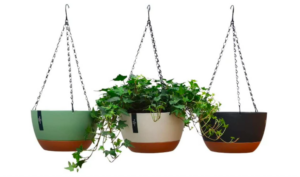

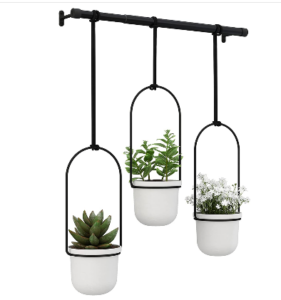
A hanging planter:
A hanging planter is a great way to bring plants into your home without taking up floor space. You could hang a planter in your living room or bedroom, or even in your kitchen.
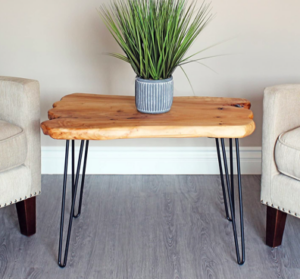
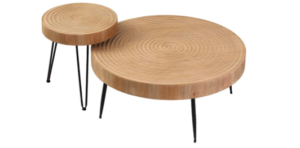
A natural wood coffee table:
A coffee table made from natural wood can add warmth and texture to your living room. Look for a table with an interesting grain pattern or unique shape.
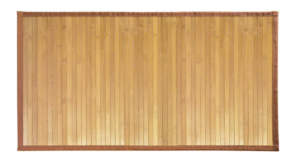
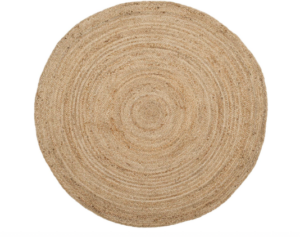
A bamboo rug:
A bamboo rug can add a natural, organic feel to any room. They’re also durable and easy to clean.
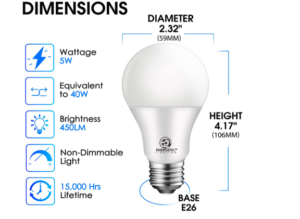

Natural light bulbs:
Natural light bulbs mimic the light of the sun and can help regulate your circadian rhythms. Look for bulbs with a color temperature of around 5000K.
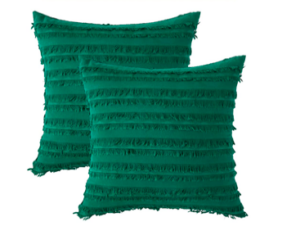
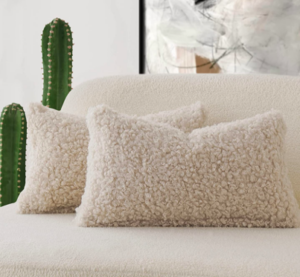
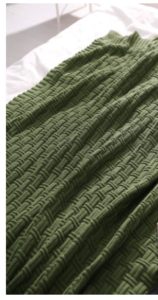

Natural textured throw pillow, cushions and baskets:
Along with natural materials, consider adding natural textures like woven fabrics, rattan, or linen. These textures add visual interest and bring a sense of warmth and coziness to a space. For example, a linen throw pillow or a woven basket can add texture and depth to a room.
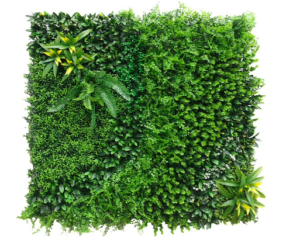
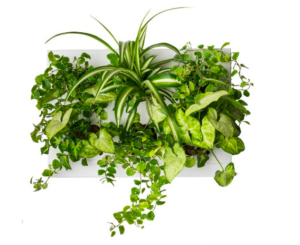
Living walls:
Living walls are vertical gardens that can add a beautiful natural element to your home. They can also improve air quality and promote well-being. Living walls can be installed both indoors and outdoors, and there are a variety of systems available that make it easy to install and maintain.


Natural scents:
Consider adding natural scents like essential oils or natural candles to your home. Scents like lavender, eucalyptus, and peppermint can promote relaxation and reduce stress.
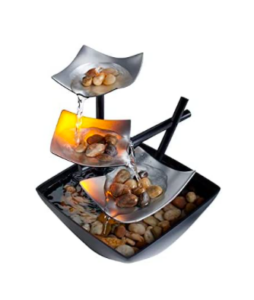
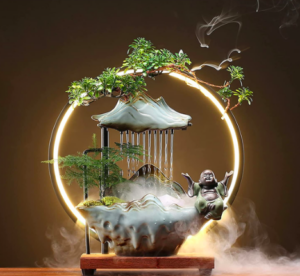
Water elements:
Along with wall-mounted fountains, consider adding other water elements to your home, like a small indoor pond or a tabletop fountain. Water can create a soothing atmosphere and help reduce stress.

Biophilic artwork:
Look for artwork that features natural elements like landscapes, flowers, or animals. This type of artwork can help create a sense of calm and bring a natural element to your space.
When styling your biophilic design elements, try to create a cohesive look by choosing pieces that complement each other. For example, if you have a bamboo rug in your living room, you could add a wooden coffee table and a few potted plants to create a cohesive natural theme. Remember, the goal is to create a space that feels calm, peaceful, and connected to nature.
When incorporating biophilic design into your home, it’s important to create a balance between natural elements and functional design. Consider the flow of the space and how you will use it. For example, if you’re incorporating plants into a room, make sure they’re placed in areas where they won’t get in the way of traffic flow or functional use.
Another thing to keep in mind is maintenance. Living walls and indoor plants require regular maintenance, so make sure you’re prepared to care for them properly. Choose plants that are easy to care for if you’re new to plant care, and make sure you have the proper tools and supplies on hand.
Overall, biophilic design can be a wonderful way to bring a sense of calm and relaxation to your home. By incorporating natural elements and textures, maximizing natural light, and creating a cohesive natural theme, you can create a space that feels connected to nature and promotes well-being.
Furthermore, as our lives become increasingly urban and technology-driven, many people are seeking ways to connect with nature and find a sense of balance and harmony in their daily lives. Biophilic design can provide a way to bring the benefits of nature into our homes and workspaces, helping us to feel more connected and grounded in our surroundings. Overall, biophilic design is famous for its ability to promote health, well-being, and connection to nature in the built environment. It has become a popular approach to design in both residential and commercial settings, and is likely to continue growing in popularity in the coming years. To check out more interior design series where I talk about in budget and trends . Take. look at my Blog here.
Comments will load here